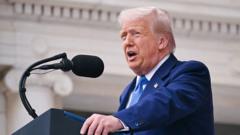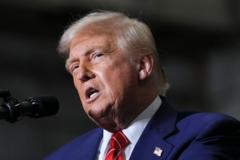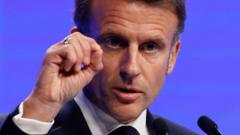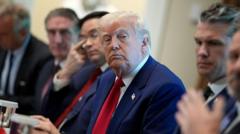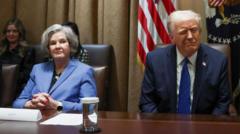The U.S.-China trade truce, which saw temporary tariff reductions, is in jeopardy as President Trump claims China's non-compliance, igniting fears of renewed trade conflicts.
**Trump Signals Trade Tensions with China Are Resurfacing**

**Trump Signals Trade Tensions with China Are Resurfacing**
President Trump accuses China of breaching a recent trade agreement, indicating a return to confrontational tactics.
President Trump raised concerns on Friday regarding the stability of the temporary trade agreement between the United States and China, accusing Beijing of failing to comply with terms intended to ease tariff tensions. In a post shared on Truth Social, he stated that China violated the terms of the deal and hinted at reverting to a more aggressive trade stance: “So much for being Mr. NICE GUY!”
These allegations jeopardize the hopes for a sustainable solution between the two largest economies in the world, particularly as businesses and investors express anxiety over potential fallout from further escalations. In recent weeks, the trade standoff has exacerbated worries about looming economic downturns on a global scale.
Compounding Trump’s concerns is a recent ruling from a federal trade court, which labeled several of his tariffs, including those imposed on China under emergency claims, as illegal. However, an appeals court has temporarily reinstated these powers, leaving Trump with limited options in addressing Chinese trade practices.
Earlier this year, tariffs on Chinese imports reached a staggering 145 percent, while American goods faced a 125 percent tax from China. Following discussions in early May, Treasury Secretary Scott Bessent and U.S. trade representative Jamieson Greer managed to negotiate a temporary pause on the levies for 90 days, allowing for longer-term discussions.
However, Bessent stated on Thursday that these discussions had stalled, suggesting that direct engagement between Trump and Chinese President Xi Jinping may be necessary to move beyond the current impasse.
These allegations jeopardize the hopes for a sustainable solution between the two largest economies in the world, particularly as businesses and investors express anxiety over potential fallout from further escalations. In recent weeks, the trade standoff has exacerbated worries about looming economic downturns on a global scale.
Compounding Trump’s concerns is a recent ruling from a federal trade court, which labeled several of his tariffs, including those imposed on China under emergency claims, as illegal. However, an appeals court has temporarily reinstated these powers, leaving Trump with limited options in addressing Chinese trade practices.
Earlier this year, tariffs on Chinese imports reached a staggering 145 percent, while American goods faced a 125 percent tax from China. Following discussions in early May, Treasury Secretary Scott Bessent and U.S. trade representative Jamieson Greer managed to negotiate a temporary pause on the levies for 90 days, allowing for longer-term discussions.
However, Bessent stated on Thursday that these discussions had stalled, suggesting that direct engagement between Trump and Chinese President Xi Jinping may be necessary to move beyond the current impasse.











